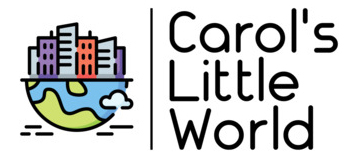The famed poet Mary Oliver passed away this week. To honor her memory, one of my poet friends posted the following excerpt from her work:
When death comes
like the hungry bear in autumn;
when death comes and takes all the bright coins from his purse
to buy me, and snaps the purse shut;
when death comes
like the measle-pox
when death comes
like an iceberg between the shoulder blades,
I want to step through the door full of curiosity, wondering:
what is it going to be like, that cottage of darkness?And therefore I look upon everything
as a brotherhood and a sisterhood,
and I look upon time as no more than an idea,
and I consider eternity as another possibility,
and I think of each life as a flower, as common
as a field daisy, and as singular,
and each name a comfortable music in the mouth,
tending, as all music does, toward silence,
and each body a lion of courage, and something
precious to the earth.When it’s over, I want to say all my life
I was a bride married to amazement.
I was the bridegroom, taking the world into my arms.When it’s over, I don’t want to wonder
if I have made of my life something particular, and real.I don’t want to find myself sighing and frightened,
or full of argument.I don’t want to end up simply having visited this world
— Mary Oliver
This really got me thinking, in fact, it set off all kinds of ideas racing around my head. For starters, the line “I was a bride married to amazement,” got me to take a hard look at myself and question what exactly I might be married to? What does amazement look like? They always tell us to shoot what we love, perhaps it’s a better plan to shoot what we might be “married to” in her sense of the word. What is amazement and how would I even begin to take it into my arms? What would “amazement” even look like to me? An interesting question, no? As an artist, how would I begin to represent “amazement” over the course of my life?
In many ways, photographers are visitors, yet she talks of, “[not] simply having visited this world.” It’s poignant. It’s a hard reminder that we should not sigh, we should not argue, we should all strive to live life to the fullest. Death comes someday. To all, death comes someday. Are we ever really prepared for it? Are we all mere visitors, having visited this world? Is it even possible to live one’s life in such a way as to have no regret, no sigh, no fear, no argue?
The “door full of curiosity,” the “cottage of darkness.” These are all interesting concepts. I reckon one could fashion an entire artistic project from either of these suggestions, just the thought alone. It’s heavy. Is time really, “no more than an idea” and eternity just a “possibility?” There is a lot here to digest yet in a lot of ways what she puts forth is extraordinarily simple. It’s a simple thought, a single idea, a common theme, played over and over again, though told this time in a touching manner.
In some ways, we are all visitors. Each and every one of us, at some point in time, is a visitor. We are temporary. We are impermanent. It’s just the nature of the beast. We are each given but one short life and it’s up to us, to each and every one of us, to make the most of that gift.
I like to think of myself as an explorer. I live with a sense of discovery, always learning, trying new things, exploring new places. By her definition, I guess I am not actually a visitor, as I’ve lived some of it, some of my life, that way. I wish, at the end of the day, I could lay my head down upon my pillow, when it’s time, when it’s that time to rest, and be able to say, “I did not visit, I did not want. No, I lived.” I think it’s how you make the most of it, but thank her for the poignant reminder.
She will be missed.
Until next time…

